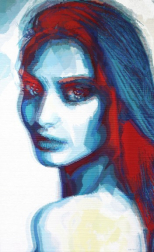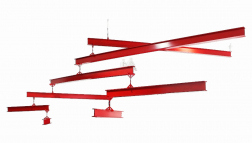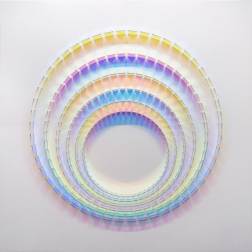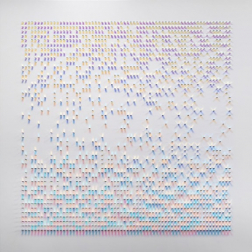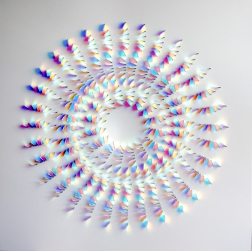Apparatus
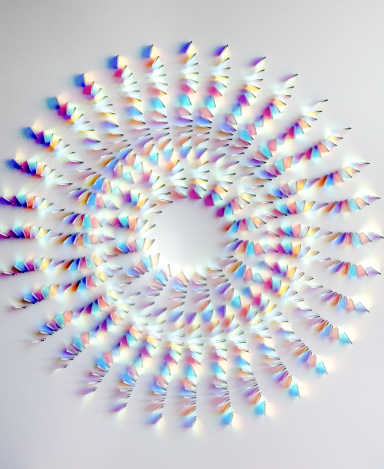
Apparatus focuses on ambitious artists that immortalize and redefine mechanical and technological advancement in their work. Through both traditional and groundbreaking media, their art celebrates and converses with the mechanics of industry and technology. The relationships between industry, technology, and humans is ever-evolving. Artists are also scientists and inventors; tinkerers that appreciate rust and circuit boards. Such innovation catalyzes a creative approach with new materials, rusting machines, and digital realities.
Chris Wood uses a range of high and low-tech optical materials to harness patterns of light that suggest ephemeral glimpses of moments in the natural world. The artist often uses a material called dichroic (meaning “two color”) glass, which was developed by NASA in the 1950s. Dichroic glass has a special optical coating meant to reflect certain wavelengths of light while letting others through.
Agnieszka Pilat's work pays tribute to industry while confronting humanity’s fear approaching automation. Pilat arranges her machines in a formal composition, creating aristocratic portraits of the past. Her paintings are both witnesses and agents of change; looking back on human progress, yet acknowledging the decay of such endeavors. Through a formal approach, Pilat helps decaying products of human achievement transcend time.
Jay Jones' current “Beams” series was inspired by the cranes that assemble the next iteration of an urban evolution, with a (not-so-subtle) nod to the 1932 iconic photograph, “Men Atop a Skyscraper." Jones plays with the illusory juxtaposition of weight and weightlessness.“I want to also bring more humor to my work,” hence the distracted man on his phone, unaware of the fate that should soon befall him.
David Jang is known for his imaginative kinetic installations, which employ hacked consumer electronics, subverted household appliances, and the castaway materials of society. These vestiges of technology, with their life’s instructions literally coded into their motherboards, are the building blocks of Jang’s practice. By deconstructing, re-programming, and reconstituting industrial and commercial castoffs, Jang creates immersive works.
Alea Pinar Du Pre builds on the synthetic intensity of digital art and her figurative style depicts a familiar but warped reality. Pinar Du Pre's original mixed media artworks portray human figures in a graphic pop-realist style. An enterprising autodidact merging technology and fine art, her contemporary artworks colorfully explore the territory between human and artificial reality.




